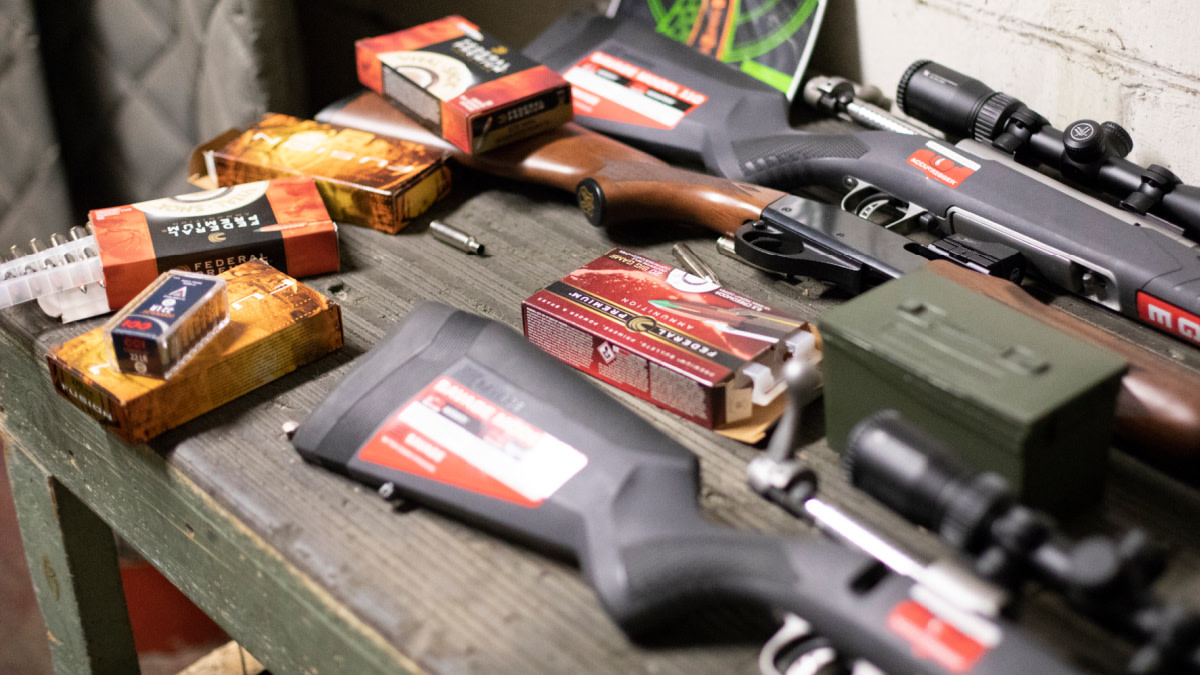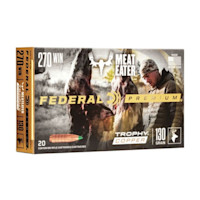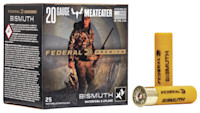
For every American, 2020 will be remembered for COVID-19 and an insane presidential election. In addition to that, gun owners will recall 2020 (and spoiler alert, 2021) for more: the worst ammunition shortage in recent memory.
Desperate gun owners have driven hours to pick up just a few boxes of .223 Rem. They’ve learned the schedules of ammunition delivery trucks and rotated between store clerks to purchase more than the store’s two-box limit. One of my relatives (who will remain nameless) even asked his friend to stash ammunition in a fishing tackle box while shopping at a local big-box store. When fellow ammo seekers asked my relative where he found two boxes of 9mm among the empty shelves several hours later, he just shrugged and walked away.
It’s not only handgun rounds that have disappeared. In the last few months, hunters have been dismayed to learn that their annual three boxes of .30-06 can’t be found. I recently visited every outdoor store in Tyler, Texas, looking for a single box of .308 Win. and found nothing.
We spoke with ammunition companies, dealers, and industry experts to get a sense of what caused the Great Ammo Shortage of 2020 and when it’s going to end. Gun owners, buckle up. The days of limited supplies and high prices won’t be over in the foreseeable future.
Why is There an Ammo Shortage?
How we got here is obvious to most industry observers. Gun owners were already keyed up with the current political climate, but buying intensified when COVID-19 reached American shores.
Ammunition maker Hornady saw their biggest sales month ever in March, and marketing director Neil Davies called it a “watershed moment” for the company. Ammunition is just one of several products people purchased to make sure they survived the lockdowns, Davies said in an interview with MeatEater.
“When people started to wonder how COVID was going to impact their lives, they flocked to all kinds of things in order to makes sure they would be taken care of: toilet paper, ammunition, guns, hand sanitizer.” When social unrest began to bubble over in major American cities, the demand for ammunition “hit third gear,” Davies said.
“You can’t discount the toilet paper effect that’s going on,” said Mark Oliva, the director of public affairs for the National Shooting Sports Foundation. “People are concerned they aren’t going to get what they need when they need it.”
Once gun owners noticed empty shelves, they purchased as much ammunition as they could get their hands on—even if they didn’t need it.
Dan Morton who operates an ammunition service called Ammo Squared, theorizes that once gun owners had enough handgun and self-defense ammunition, they started working on building stockpiles for their other firearms.
“If you’re a gun owner, you just spend money on gun stuff,” he said. “If semi-auto handgun ammo is hard to find, you start looking for the next thing. That’s part of the demand—if one gun item isn’t available, then it’s going to flow to another thing.”
Manufacturing During the Ammo Shortage
Manufacturing had to take a step back at the beginning of the pandemic. Overseas manufacturing in countries with strict lockdown measures had to totally shut down, which especially affected primer production.
Even smaller ammunition companies can’t secure the components they need. Two of Morton’s suppliers told him recently they can’t find brass and primers, and hand loaders can attest to the lack of these components on the shelves.
Ammunition components weren’t the only thing in short supply at the beginning of the pandemic. Hornady had trouble finding boxes and packing tape because, in many states, ammunition companies weren’t deemed “essential.” But American manufacturing hasn’t slowed since those early days—if anything, it’s grown.
“There’s more ammo being made for the consumer market right now than, presumably, has ever been made in history,” Davies said. “We are putting out more than we ever had. And I am positive that all of our colleagues in this industry are doing the same thing.”
Federal Premium also says they’re running full steam ahead. “We are running our CCI/Speer and Federal factories 24/7 and shipping products for commercial distribution every day,” said Jason Vanderbrink, the company’s president.
In a recent video, Vanderbrink took viewers on a tour of one of Federal’s three factories and explained that they’re making more .22 LR, .30-06, and 9mm than they ever have. “We have hired hundreds of employees. We’re making all of the ammunition as fast as we can. We are doing our damndest to meet this demand,” Vanderbrink said.
Ammo Shortage Conspiracy Theories
Despite what internet conspiracy theories claim, both Hornady and Federal have flatly denied that the companies are stockpiling ammunition for the government, selling only to wealthy individuals, or price gouging.
Morton pointed out that ammunition companies are profit motivated, so it doesn’t make sense for them to be hoarding ammunition. “Are you kidding me? They’re going to sell as much ammo as they possibly can. They’re not going to be storing it. It’s just basic economics,” Morton said.
Some theories are less outlandish. Morton wondered if the shortage of hunting ammunition has been caused by companies shifting production from less popular cartridges, like 7mm-08, towards screaming hot cartridges, like 9mm.
Davies admitted that there is some truth to this claim. Ammunition manufacturing machines produce only a limited range of sizes and lengths of brass and bullets. The machines that produce 6.5 Creedmoor, for example, can’t be easily commandeered to produce .45 ACP. Hornady, Federal, and other manufacturers haven’t shifted all their production to .223 Rem. and 9mm, and Davies said they have machines producing most cartridges.
In his video message, Vanderbrink held up a handful of .30-06 to reassure consumers that they are still producing hunting rounds.
However, Davies did admit that, since they make their ammunition to order, they prioritize the cartridges for which they have the most orders. If the same press can produce both .223 Rem. and .222 Rem., that press will be primarily dedicated to .223 Rem.
Production can be increased, but only to a point. Oliva and Davies explained that investing in the machinery, factories, and manpower to meet the current demand might not be a wise business move, and it wouldn’t be responsible to their employees and customers.
“You don’t keep a spare house just in case the one you have catches on fire,” Davies said, speaking to those who wonder why Hornady can’t build more factories. “As our industry has expanded and contracted, we’ve seen a lot of people who have tried to meet the boom, but by the time you meet it, it’s bust.”
When Will Ammo be Available Again?
Everyone we spoke with predicted that the shortage will last well into 2021 (and perhaps longer), but no one could say for sure.
“It’s going to go deep into 2021. That’s a fact. This entire calendar year,” Davies said.
Both Davies and Oliva mentioned that the actions of the Biden administration will affect whether the supply can catch up to the demand. If the administration is quiet on gun control, Davies envisions demand leveling off in the next 12 months to a point when ammo makers can start to catch up. If not, then this will drag out longer.
The recent surge in gun buying doesn’t make the picture look any brighter. Over 20 million firearms were sold in 2020, breaking the previous annual record of 15.7 million set in 2016. Based on the NSSF’s survey of gun store owners, they estimate that about 40%—over 8 million—of those purchases were made by first-time buyers.
As Vanderbrink pointed out in his video address, 8 to 10 million new gun owners will force ammo makers to come up with hundreds of millions of new rounds of ammunition.
In the meantime, hunters can do a few things to ensure they’ll have the ammo they need. Morton suggests to try branching out to new calibers, for example. If you’ve been considering purchasing a firearm in .450 Bushmaster or 7mm Rem. Mag., now is the time.
Morton has noticed that cartridges become available in waves. For a few weeks, he can find .223 Rem. The next week, .223 Rem. is gone, but .30-06 is available. Purchasing ammo on backorder might be frustrating in the moment, but it’ll set you up for a nice surprise in March or April when those orders get fulfilled.
But be warned: You’ll be paying premium for ammunition during this shortage. Prices have skyrocketed and some cartridges cost two or three times what they did this time last year. Some of this increase can be blamed on ammo hoarders and an increase in the cost of raw materials, but most high prices are due simply to the laws of supply and demand.
The good news is that rising prices are part of the free market process that will allow the supply to catch up to the demand. High prices provide a natural check on demand, which will eventually allow the manufacturers to catch up. It may take longer than in the past, but some day the Great Ammo Shortage of 2020 will come to an end. Until then, try branching out to less common calibers and find friends good enough to hide ammo in a tackle box for you.







Conversation